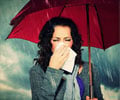The airborne transmission of COVID-19 is confirmed by a group of scientists, highlighting the need to refine strategies to control the COVID-19 spread.

Need Ways To Tackle COVID-19 Transmission
TOP INSIGHT
The positivity rate of finding COVID-19 virus in the air was 75% when two or more COVID - 19 patients were present in a room, in contrast to 15.8% when one or no COVID -19 patients occupied the room.
The exact mechanism of the spread of COVID-19 has remained elusive. Earlier it was thought to spread by surfaces. However, quantitative evidence that shows the infectious COVID-19 virus particles in the air was lacking.
A group of scientists analyzed the COVID-19 virus genome content from air samples collected from different areas occupied by affected patients. These included hospitals, closed rooms in which only spent a short period, and houses of home-quarantined patients.
More People, Stronger The Virus Concentration
They found that the virus could be frequently detected in the air around COVID-19 patients and that the positivity rate increased with the number of patients present on the premises.
“Our results show that coronavirus can stay in the air for some time in absence of ventilation in closed spaces,” said Dr. Shivranjani Moharir, a scientist involved in the study.
As we are back to conducting in-person activities, air surveillance is a useful means to predict the infection potential of spaces like classrooms, and meeting halls. This can help refine strategies to control the spread of infections.
The air surveillance technique is not just limited to coronavirus but can also be applied to monitor other air-borne infections. Last but not least, continue wearing a mask to avoid COVID-19 infections.
Source-Medindia
 MEDINDIA
MEDINDIA




 Email
Email










